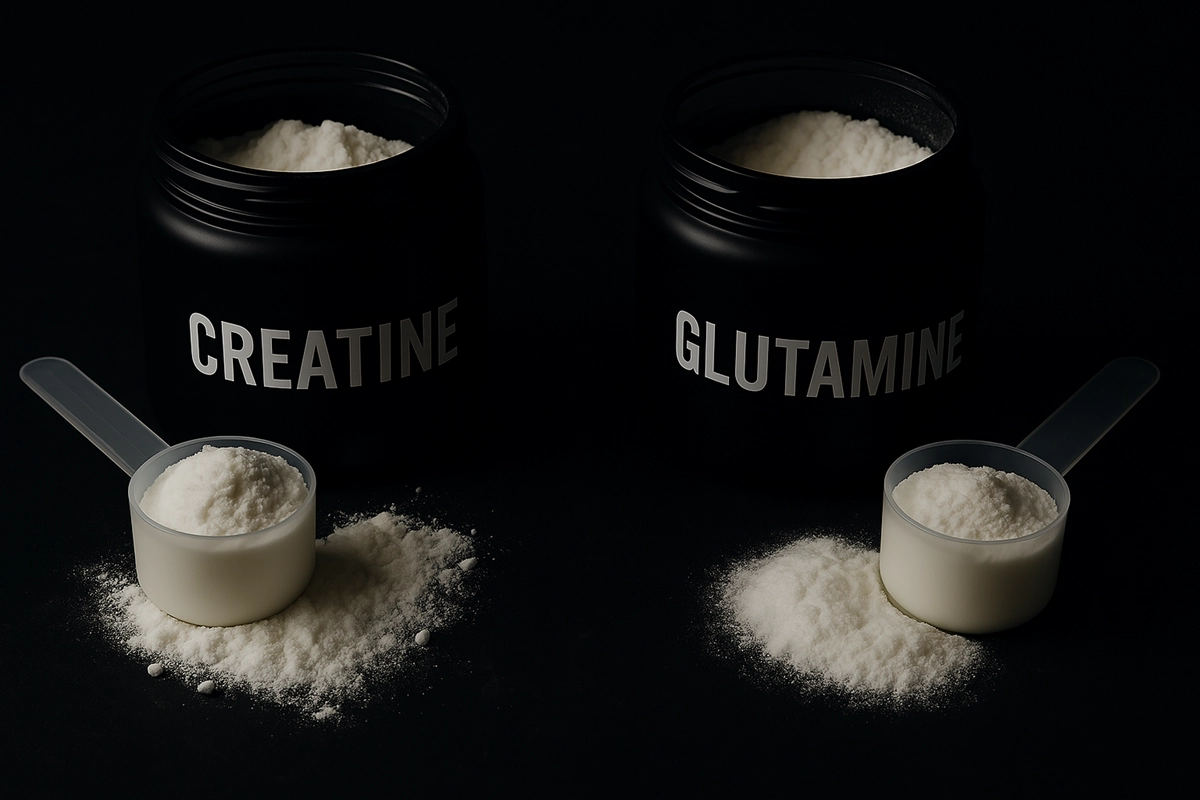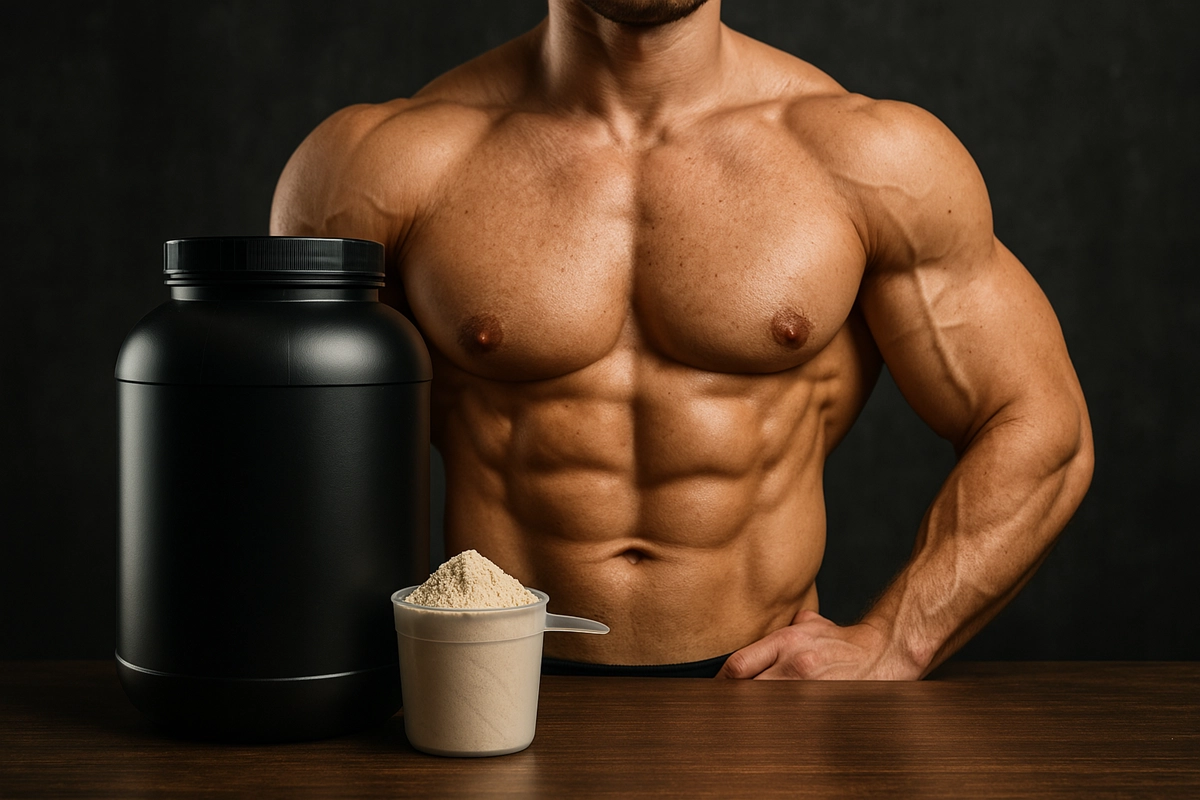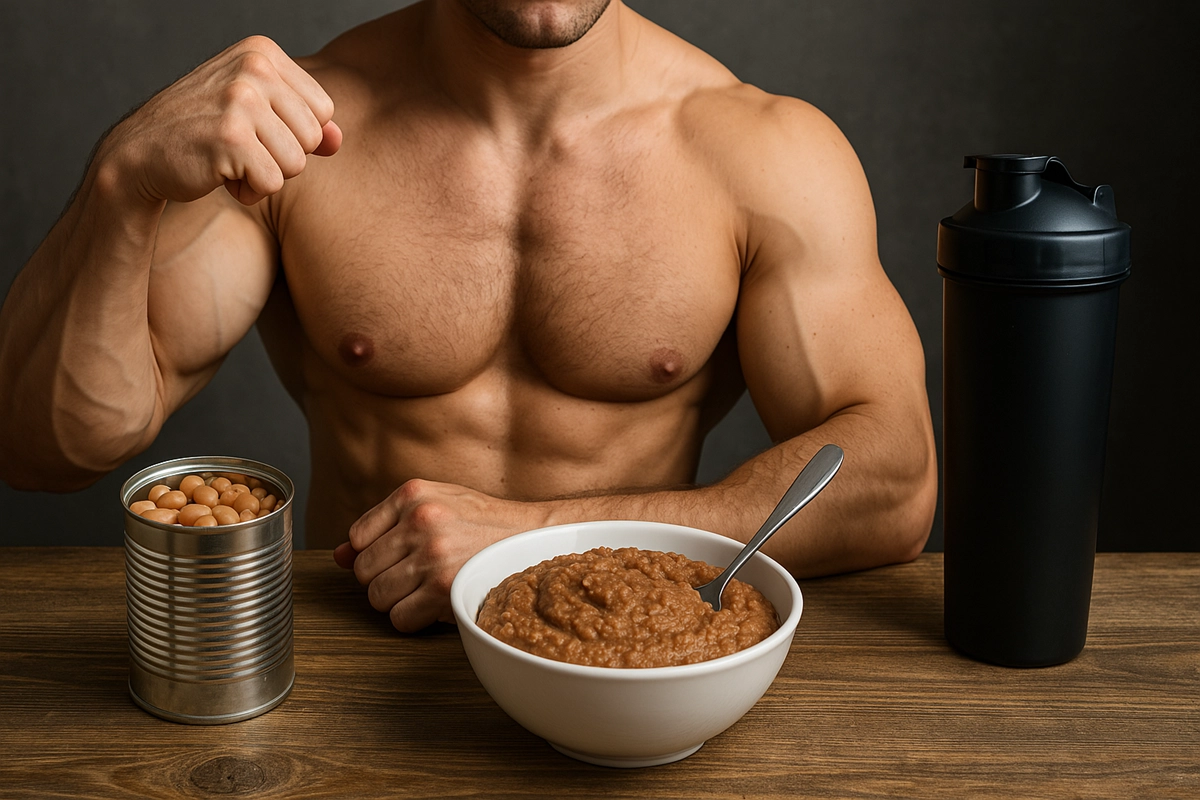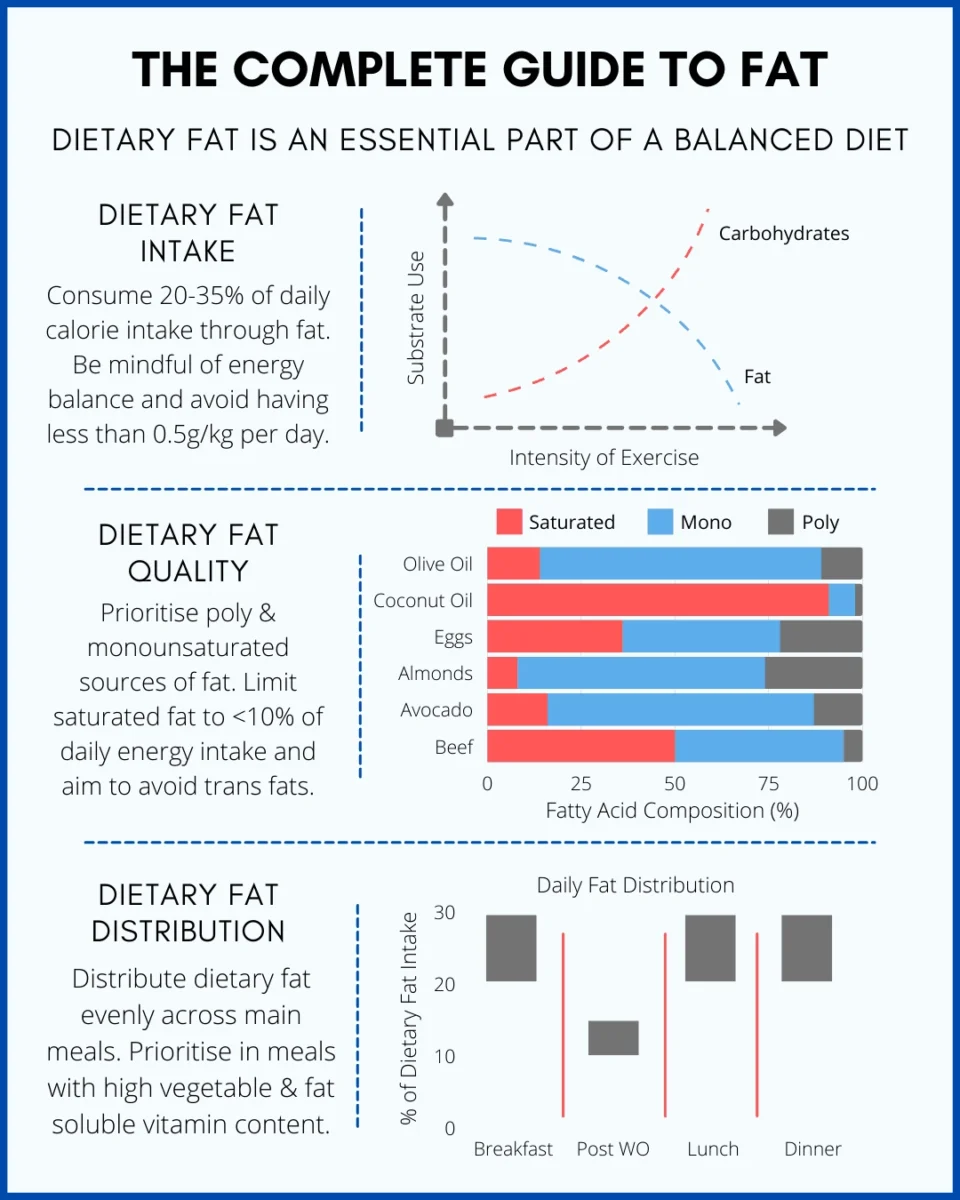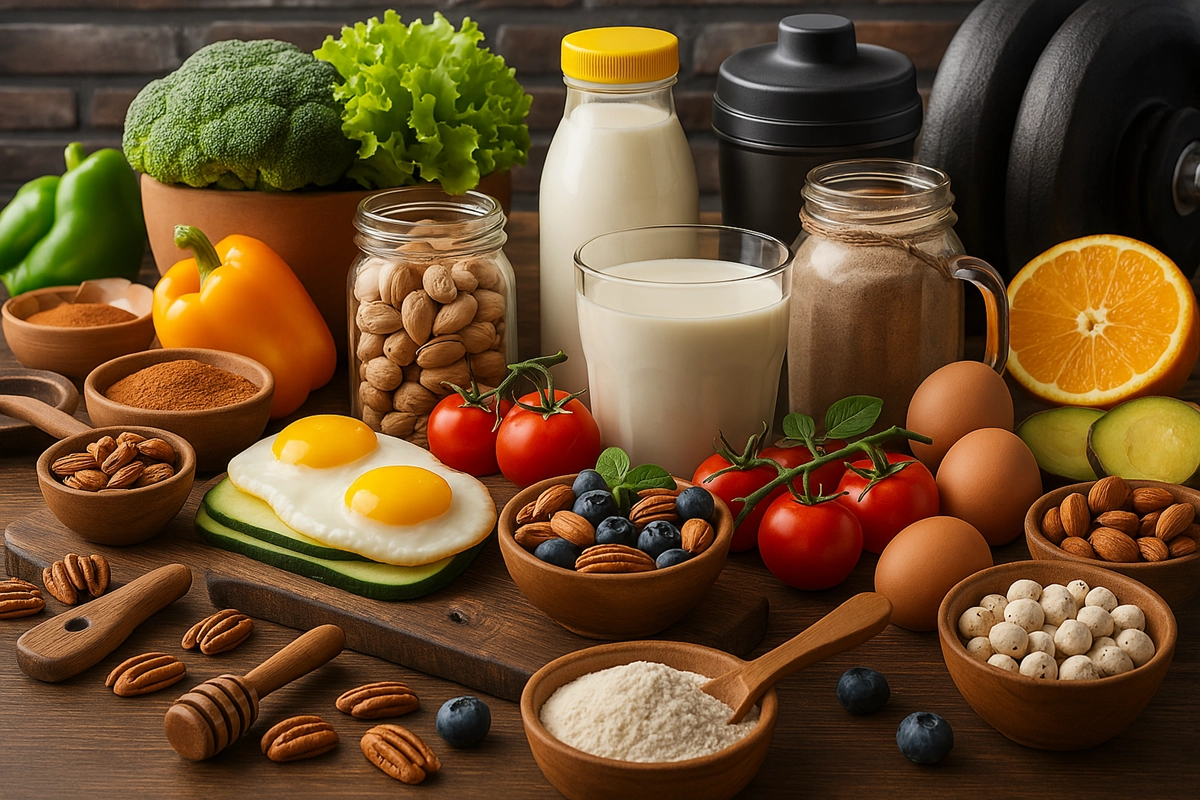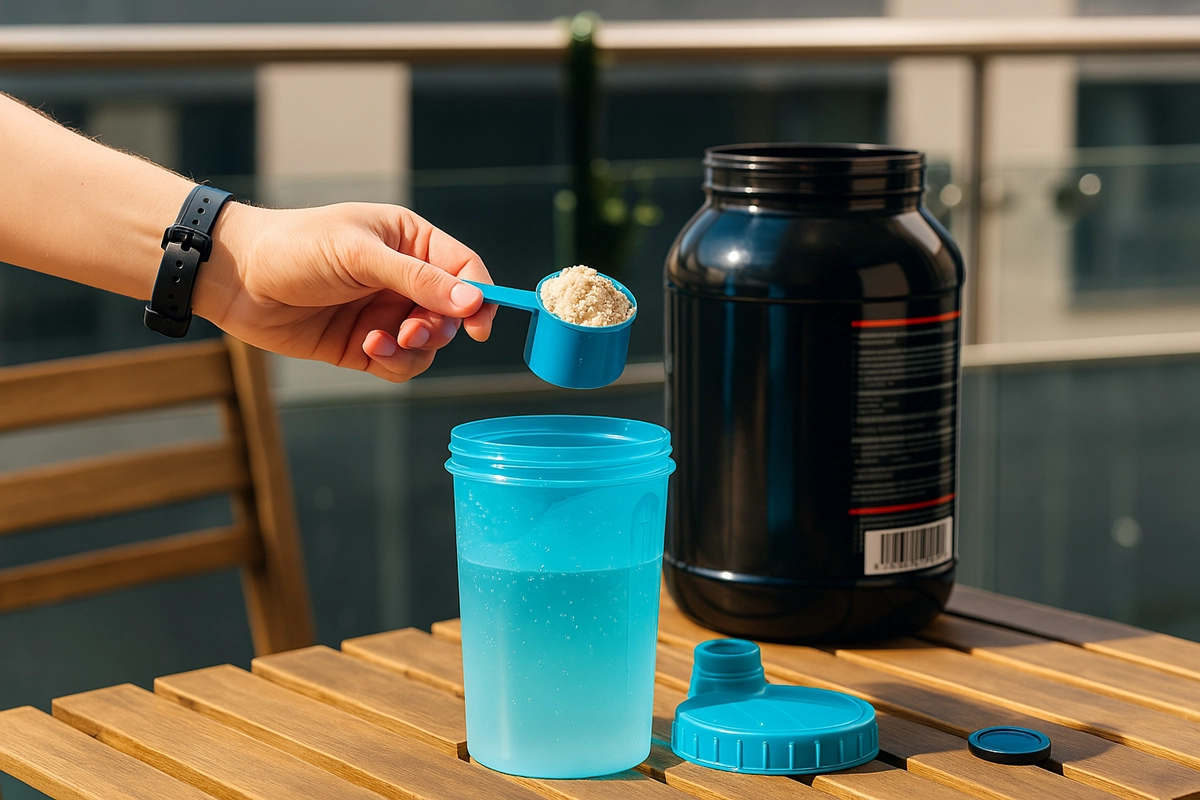You’ve likely seen countless gym enthusiasts downing their creatine shakes and glutamine capsules, but do you know the potential drawbacks?
While Arnold Schwarzenegger famously promoted supplements throughout his career, he also emphasized the importance of understanding their effects before use. Both creatine and glutamine can enhance your training, yet they work in distinctly different ways and carry specific risks that might impact your fitness journey.
Let’s explore what sets these popular supplements apart and their lesser-known side effects.
What Is Glutamine and What Does It Do?
Glutamine is the most abundant amino acid in your body’s muscles, playing a crucial role in protein synthesis and immune system function. Your muscle tissue naturally stores this essential amino acid, releasing it when your body needs extra support during intense training or stress.
When you’re pushing hard in the gym, your glutamine content can drop considerably, potentially compromising your recovery and immune system. That’s why many athletes, including Arnold during his competitive years, turn to glutamine supplements.
These supplements help maintain ideal levels in your body, especially during periods of heavy training.
You’ll find that glutamine supplements can support:
- Faster post-workout recovery
- Enhanced immune function
- Better protein synthesis
- Reduced muscle breakdown
- Improved gut health
The Most Abundant Amino Acid in the Body
Looking deeper into muscle biochemistry, L-glutamine stands out as your body’s superstar amino acid, making up over 60% of your skeletal muscle’s amino acid pool.
This powerhouse molecule isn’t just abundant; it’s vital for muscle recovery and athletic performance.
When you’re pushing through intense workouts, your body’s L-glutamine levels naturally fluctuate to support muscle composition and repair.
You’ll find it working overtime in three key areas:
- Supporting muscle tissue repair after training
- Maintaining your immune function during heavy training periods
- Protecting your muscle mass during stressful periods
Even Arnold understood the importance of amino acids in building his legendary physique.
As the most prevalent amino acid in your body, L-glutamine plays a significant role in keeping your muscles strong and your immune system firing on all cylinders.
What Does “Conditionally Essential” Mean?
When you’re training hard, your body’s needs shift dramatically – that’s where the concept of “conditionally essential” amino acids comes into play.
Glutamine is a prime example of this phenomenon, as your body can typically produce sufficient amounts of it under normal conditions. However, during intense training, illness, or physical stress, your natural glutamine production can’t keep up with demand.
That’s when this amino acid becomes “conditionally essential,” meaning you’ll need to boost your intake through diet or supplementation. Without adequate levels, you’ll likely notice impacts on:
- Muscle recovery speed
- Overall muscle performance
- Immune response effectiveness
Think of glutamine supplementation like having a backup generator – you don’t always need it, but it’s vital when your body’s regular power supply can’t meet increased demands.
Glutamine in Muscle and Brain Function
Beyond its role during high-intensity training, understanding how glutamine works in your muscles and brain reveals why bodybuilding legends like Arnold Schwarzenegger paid attention to this amino acid.
Your skeletal muscle holds about 60% of your body’s glutamine peptides, which play a vital role in muscle protein synthesis and nitrogen transport. When you’re under metabolic stress from intense workouts, your glutamine levels can become depleted.
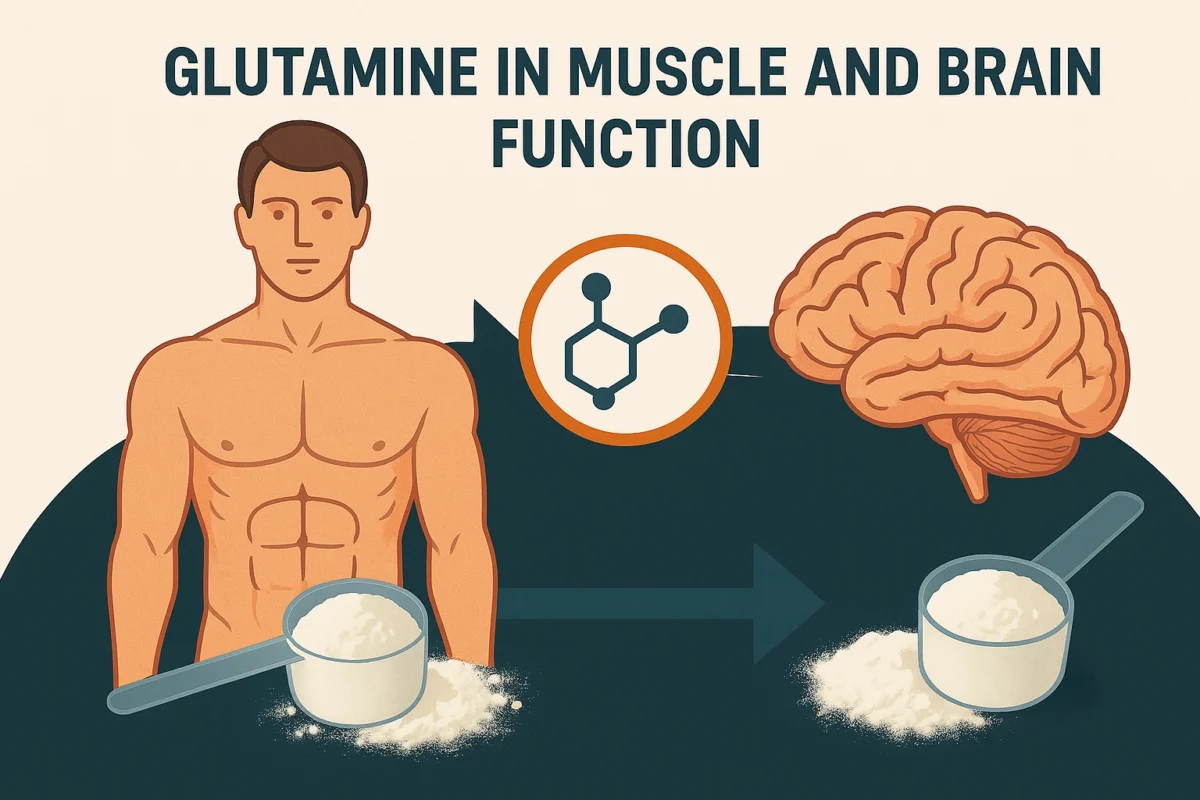
That’s why Arnold always emphasized the importance of proper supplementation during his peak training years.
What makes glutamine unique is its ability to cross the blood-brain barrier, supporting both muscle recovery and brain function. Inside your body, it helps:
- Balance acid levels
- Create glucose from non-carb sources
- Form antioxidants like glutathione
- Transport nitrogen between tissues
Glutamine for Performance and Recovery
As your workout intensity increases, glutamine becomes a crucial component in your performance and recovery arsenal.
Your body’s demand for this amino acid skyrockets during intense training, and without adequate supplies, you’ll face increased muscle breakdown and slower healing.
Studies show that supplementing with glutamine after a workout can significantly impact your results.
You’ll experience enhanced muscle protein synthesis, shorter recovery time between sessions, and reduced delayed onset muscle soreness (DOMS).
Even Arnold, known for his grueling workouts, recognized the importance of recovery in building his legendary physique.
When your glutamine stores are depleted, your body may begin breaking down muscle tissue to maintain essential functions.
Glutamine and Gut Health
While gym-goers often focus on glutamine’s muscle-building properties, this powerful amino acid serves as your gut’s secret weapon for ideal health.
It’s the primary fuel source for the cells lining your intestines, helping maintain a strong protective barrier. Your gut health depends heavily on glutamine’s ability to:
- Strengthen the intestinal wall’s structure
- Reduce intestinal permeability (also known as “leaky gut”)
- Power up immune cells in your gut-associated lymphoid tissue
If you’re dealing with gastrointestinal disorders like IBD, IBS, Crohn’s disease, or ulcerative colitis, glutamine supplementation could be particularly beneficial.

Research indicates that it helps repair damaged intestinal tissue and alleviates symptoms associated with these conditions.
Just as Arnold always emphasized the importance of internal health, your gut’s well-being is vital for overall performance.
Benefits of L-Glutamine
When it comes to enhancing your workout results, L-glutamine stands out as one of the most versatile amino acids in your supplement arsenal. You’ll experience reduced muscle soreness and faster recovery times, allowing you to return to training sooner.
L-glutamine’s impact on body composition goes beyond just muscle health. It’s a powerful ally in preventing muscle damage and maintaining lean mass during intense training periods.
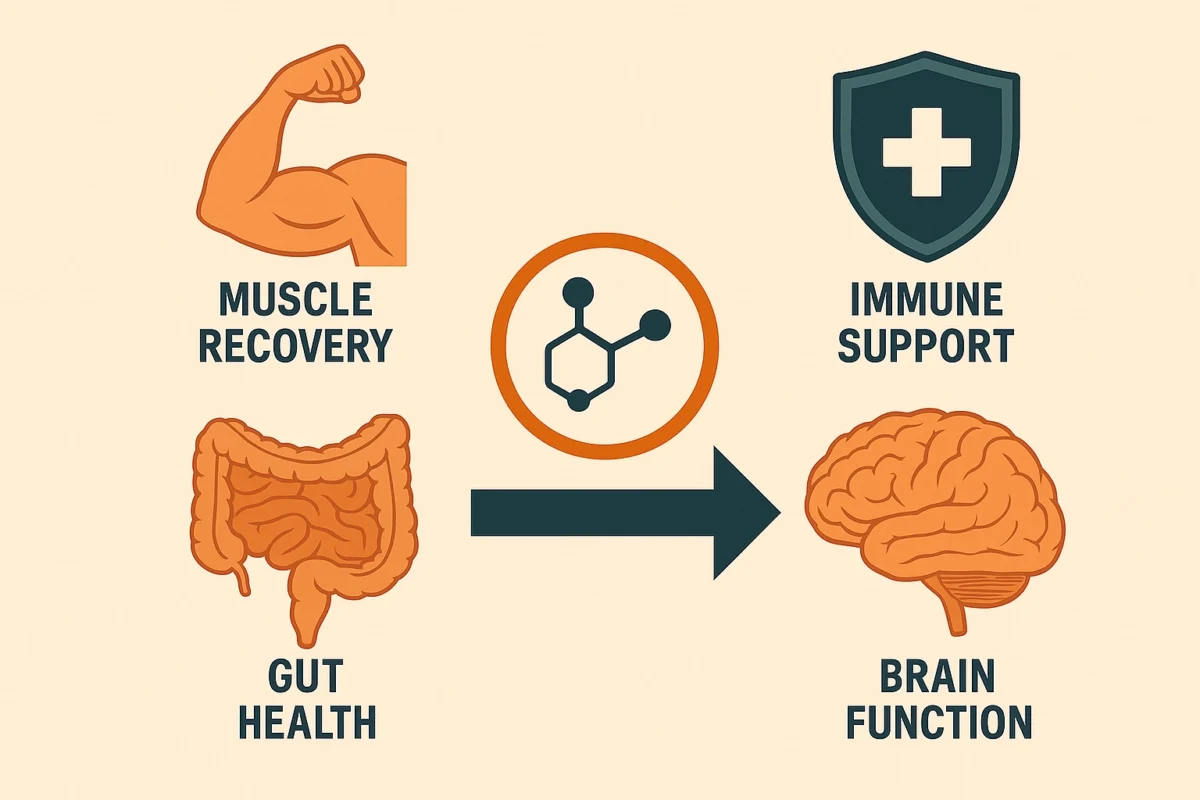
Here’s what you can expect:
- Accelerated post-workout recovery
- Enhanced muscle protein synthesis
- Improved immune system function
- Better digestive health
- Reduced inflammatory response
Even Arnold recognized glutamine’s potential for sports supplementation during his competitive days.
The amino acid’s ability to support both muscle growth and gut health makes it a thorough solution for athletes serious about their performance and recovery.
What Is Creatine and What Does It Do?
Moving from glutamine to another powerhouse supplement, creatine stands as the most extensively researched performance enhancer in sports nutrition.
You’ll find creatine monohydrate naturally in foods like red meat and fish, but supplementation can significantly boost your muscle creatine stores.
When you combine creatine supplementation with resistance training, you’ll experience improved muscular performance and enhanced muscle strength.
Your body uses creatine to produce ATP, the primary energy source for intense, short-duration activities, such as weightlifting.
Even Arnold Schwarzenegger has acknowledged the role of creatine in modern bodybuilding success.
The supplement works by increasing your muscles’ phosphocreatine stores, which helps generate more ATP during high-intensity exercise.
This means you’ll be able to push harder during workouts and recover faster between sets.
One of the Most Researched Ergogenic Aids for Strength and Performance
Since its emergence in the 1990s, creatine has earned its reputation as the gold standard of sports supplementation through extensive scientific validation.
It has consistently been proven to be one of the most effective ergogenic aids for enhancing athletic performance and building lean muscle mass.
When you’re looking to boost your strength and power output, creatine stands out among supplements with its impressive research backing.
Numerous studies have demonstrated its ability to enhance high-intensity exercise performance, particularly in activities that require explosive movements.
The supplement’s effectiveness in increasing muscle size and strength has made it a staple in both competitive athletics and recreational training.
Just as Arnold championed the importance of proper supplementation during his competitive days, today’s athletes recognize the role of creatine in maximizing their training potential.
What Is Creatine Made Of?
Creatine’s molecular structure reveals its remarkable simplicity as a combination of three essential amino acids: methionine, arginine, and glycine.
Your body naturally produces this compound in your liver and kidneys, but the magic happens when it reaches your skeletal muscle mass, where 95% of it’s stored.
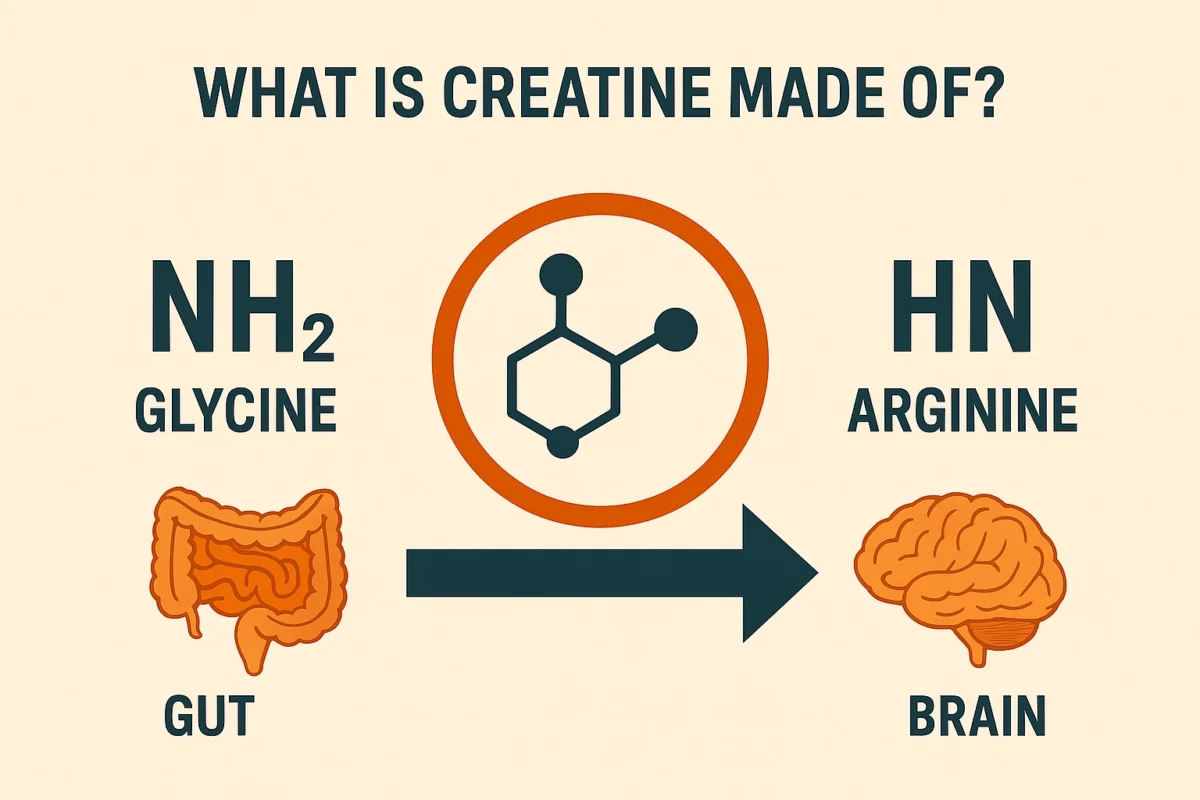
Once it’s in your muscles, creatine transforms into phosphocreatine, working as your body’s rapid-fire energy system. Think of it as your muscles’ instant power source – when you’re pushing through those heavy sets (as Arnold would say, “the last three or four reps is what makes the muscle grow”), phosphocreatine jumps into action.
It quickly helps form ATP, providing the explosive strength you need for intense lifting and sprinting.
Creatine’s Impact on Performance and Muscle Growth
Now that you understand creatine’s basic structure let’s examine how this powerful compound transforms your workout performance. When you supplement, your muscles store more phosphocreatine, leading to faster ATP regeneration during intense training sessions.
This enhanced energy system directly impacts your performance measures in several ways:
- You’ll lift heavier weights and complete more reps
- Your muscle endurance between sets improves dramatically
- Your muscular strength gains accelerate over time
- You’ll build lean body mass more efficiently
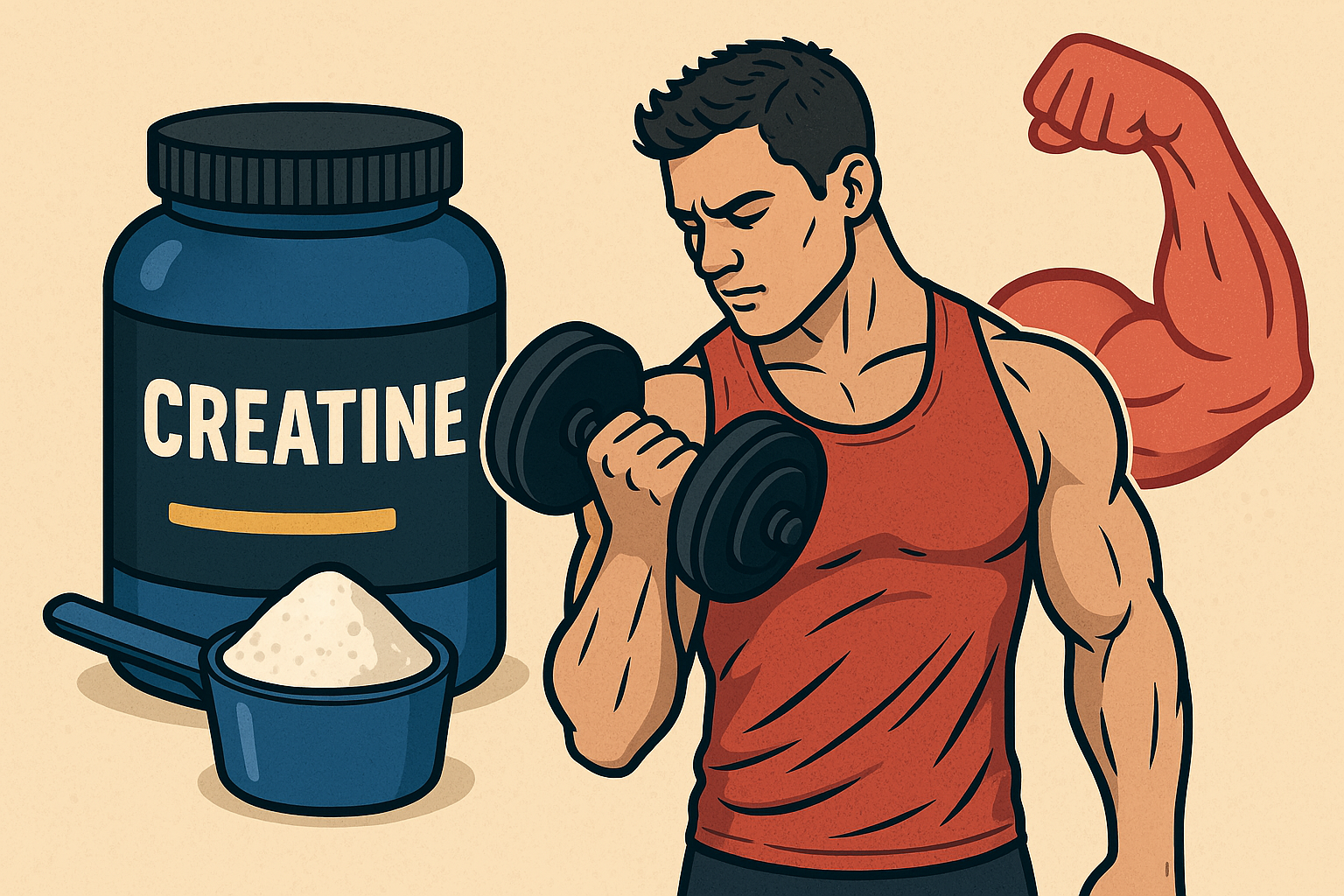
Just as Arnold preached about the importance of compound movements, creatine works as a compound catalyst for muscle mass development.
Clinical research confirms that consistent supplementation enhances your training performance and accelerates muscular hypertrophy. The science backs what bodybuilders have known for decades – creatine is a transformative element for serious athletes.
Different Forms of Creatine
Although creatine monohydrate remains the gold standard for supplementation, you’ll find several alternative forms competing for attention in today’s supplement market.
The leading contenders include creatine hydrochloride (HCL), creatine nitrate, and Kre-Alkalyn, each claiming superior benefits.
Despite marketing claims about enhanced absorption or effectiveness, sports nutrition research reveals a significant truth: most alternative forms don’t outperform traditional creatine monohydrates in delivering performance benefits.
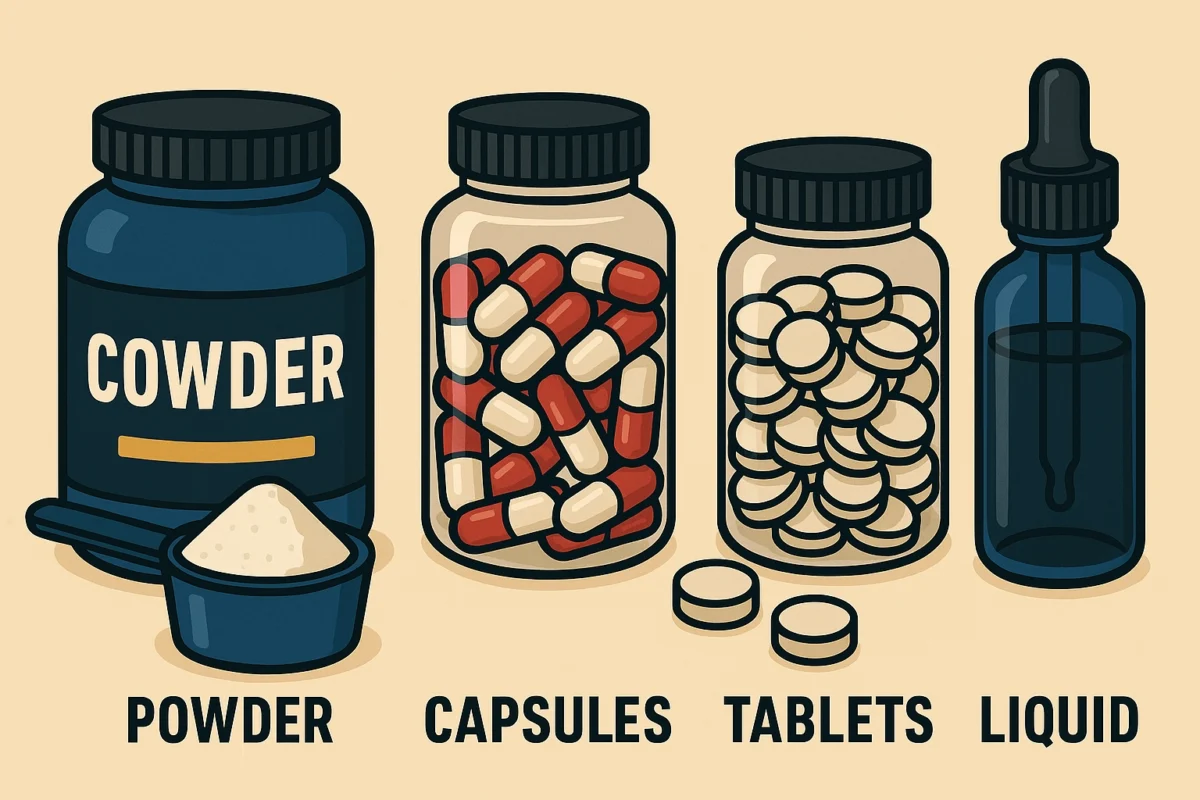
The only notable exception is Kre-Alkalyn, which has shown some promising results in comparative studies.
If you’re looking to maximize your gains, don’t get caught up in fancy marketing.
Arnold himself would tell you to stick with what’s proven – and decades of research support creatine monohydrate as your most reliable and cost-effective option for building strength and muscle mass.
What Is Kre-Alkalyn?
Among the latest innovations in creatine supplementation, Kre-Alkalyn stands out as a pH-buffered form of creatine monohydrate designed to enhance absorption and minimize side effects.
You’ll find that Kre-Alkalyn addresses common complaints associated with traditional creatine supplementation, including muscle cramps, bloating, and water retention.
What sets it apart is its enhanced stability in your stomach, leading to better absorption during resistance exercise training.
Unlike conventional creatine monohydrate, which requires a loading phase of 10-15 grams daily for up to 10 days, Kre-Alkalyn doesn’t need this initial saturation period to be effective.
This means you won’t need to consume 100-150 grams before seeing improvements in body mass and strength gains.
The pH-buffered formula also reduces conversion to creatinine, potentially decreasing digestive discomfort.
Research Supporting Kre-Alkalyn
Scientific research has consistently validated the effectiveness of Kre-Alkalyn, with a landmark study involving Bulgaria’s elite weightlifters demonstrating its superior strength-building potential.
The study revealed a remarkable 28.25% greater increase in muscle torque and overall strength compared to traditional creatine monohydrate users.
You’ll be interested to know that, unlike regular creatine, which can cause bloating and digestive issues, Kre-Alkalyn has proven gentler on athletes’ bodies.
This performance-enhancing supplement shows promise in preventing muscle atrophy while boosting both anaerobic and aerobic performance.
Research supporting Kre-Alkalyn’s benefits extends beyond strength gains, with studies indicating improvements in VO2 max and muscular endurance.
As Arnold would say, “The evidence is there – now it’s time to put in the work.”
Benefits of Creatine
Strength athletes worldwide have adopted creatine as a game-changing supplement due to its remarkable ability to enhance athletic performance.
You’ll experience significant gains in muscle mass and strength, much like Arnold’s dedication to pushing physical limits during his prime competing years.
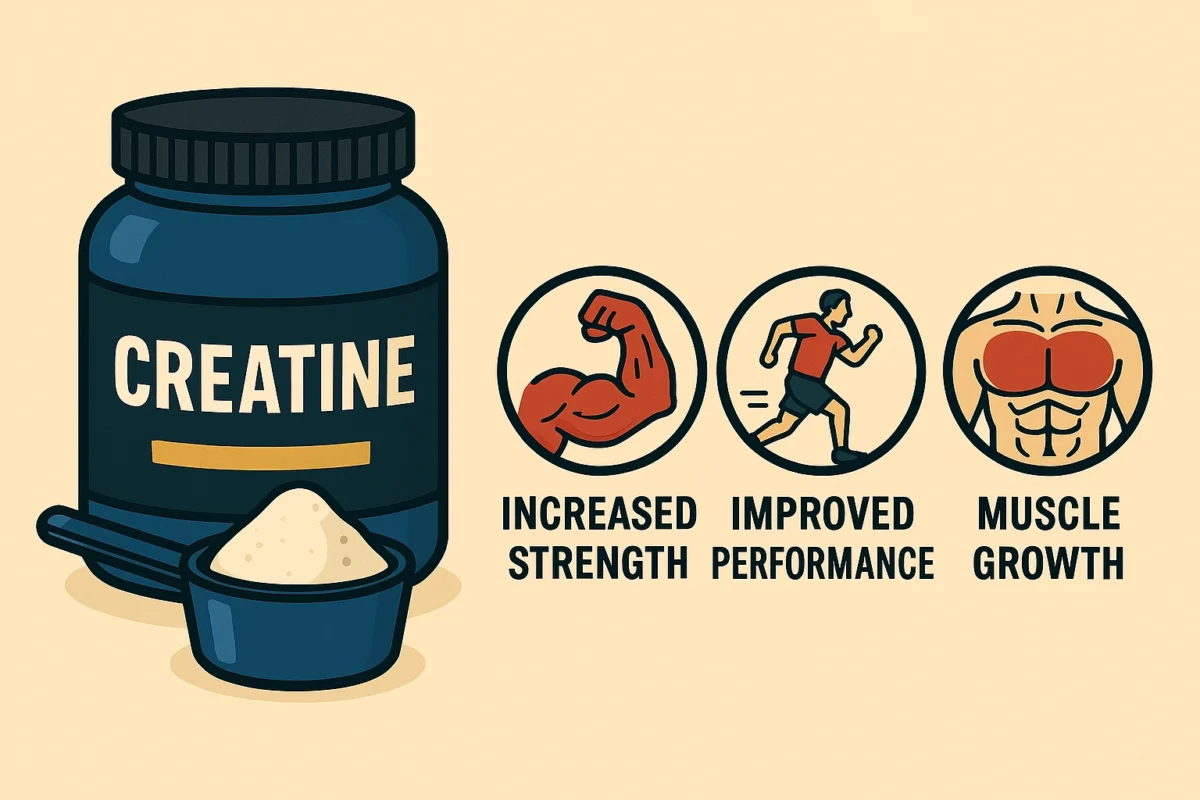
Research shows creatine delivers multiple benefits that can transform your training:
- Accelerates muscle recovery between intense workouts
- Boosts explosive power and sprint capabilities
- Enhances cognitive function and mental clarity
- Improves endurance and oxygen utilization
- Increases overall strength and muscle mass gains
Your body will respond with noticeable improvements in athletic performance across various disciplines.
Whether you’re a powerlifter targeting new PRs or an endurance athlete seeking better stamina, creatine’s scientifically proven benefits make it a valuable addition to your supplement regimen.
What’s the Difference Between Glutamine and Creatine?
While both supplements are popular among fitness enthusiasts, creatine and glutamine serve distinctly different roles in your body’s biochemistry and athletic performance.
Creatine primarily supports skeletal muscle metabolism by increasing phosphocreatine stores, helping you perform explosive movements and heavy lifts. Your sports doctor might recommend it for strength gains and muscle building.
Meanwhile, glutamine, one of the branched-chain amino acids, plays a vital role in recovery and immune function.
If you’re monitoring plasma glutamine concentrations through Med Sci Sports Exercise testing, you’ll notice they drop considerably during intense training. Creatine won’t help here – that’s where glutamine supplementation comes in.
Arnold himself was known to combine both supplements, using creatine for power and glutamine for recovery, maximizing his legendary workout capacity.
The Mechanism: How They Work
Understanding how these supplements operate in your body reveals why athletes like Arnold strategically combined them for maximum results.
Creatine’s mechanism centers on boosting ATP production, your body’s primary energy source for explosive movements. When you’re powering through heavy sets like Arnold’s famous chest workouts, creatine helps fuel those intense bursts of strength.
Glutamine works differently through nitrogen transport, which is vital for your muscle recovery process. After you’ve torn down muscle fibers during training, glutamine helps redistribute nitrogen atoms to rebuild damaged tissue. It’s like having a molecular construction crew working overtime.
Additionally, glutamine strengthens the gut lining and immune system, which is why Arnold emphasized its importance for maintaining peak performance during his most grueling training phases.
Molecular Structure
The molecular makeup of creatine and glutamine reveals why these powerhouse supplements became cornerstones of Arnold’s supplement stack.
While both are amino acid-based compounds, their molecular structures couldn’t be more different.
You’ll find glutamine exists as a single conditionally essential amino acid that your body produces naturally during normal conditions.
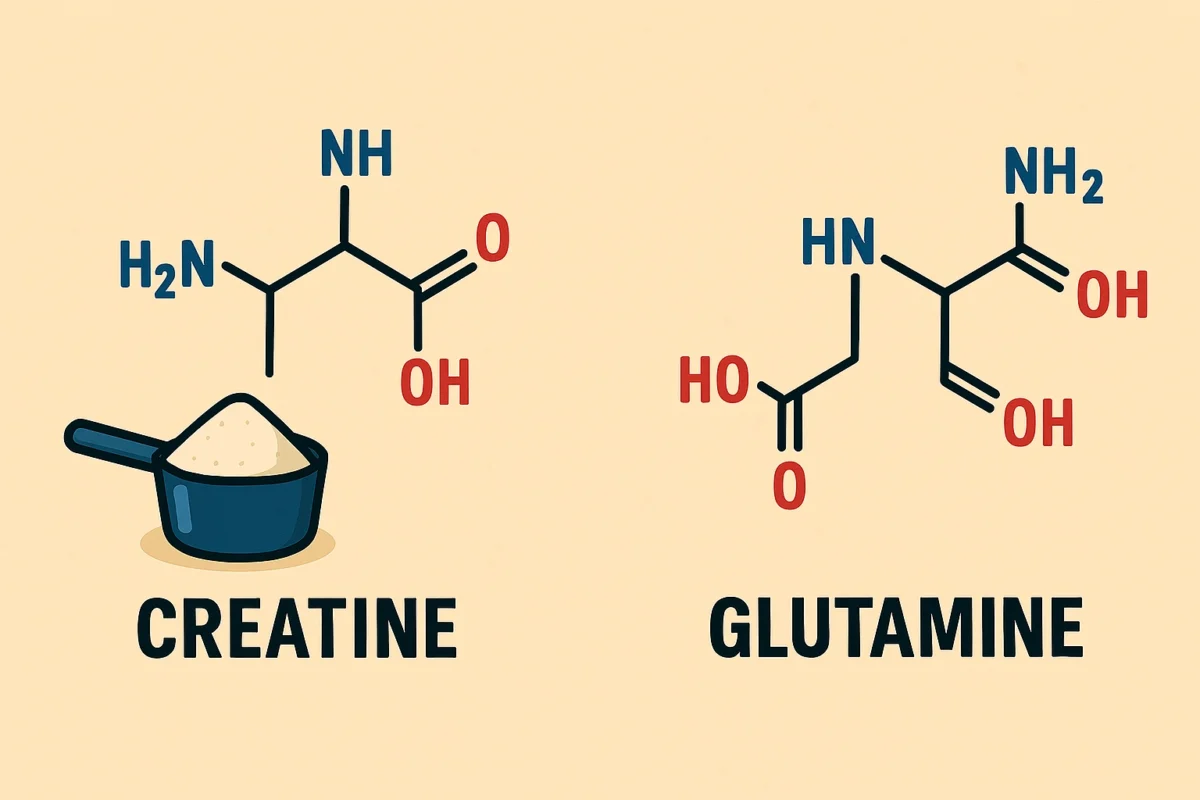
Your skeletal muscles are the primary factory for glutamine synthesis, supporting immune function and recovery.
Creatine’s molecular structure is more complex, requiring three distinct amino acids for synthesis:
- Arginine (conditionally essential)
- Glycine (conditionally crucial)
- Methionine (essential)
Your liver and kidneys work together to synthesize creatine, creating a compound that’s fundamentally different from glutamine’s simpler structure.
Understanding these molecular differences helps explain their unique roles in muscle development.
Performance Benefits
Performance benefits from creatine and glutamine take distinct pathways to enhance your training results.
While creatine enhances your explosive strength and maximizes ATP stores for intense lifting sessions, glutamine focuses on post-workout recovery and immune system support.
Research shows you’ll get even better results when you combine them. Track athletes who stacked creatine with glutamine experienced significant improvements in lean body mass and power output compared to those who used creatine alone.
As Arnold would say, “The last three reps make the muscle grow,” and these supplements help you push through those critical moments.
Your body composition changes more rapidly when you’re able to train harder and recover more effectively.
Creatine enhances your power output during workouts, while glutamine reduces muscle soreness and helps maintain nitrogen balance for optimal recovery.
Both Are Abundant in Animal Proteins
Natural sources of creatine and glutamine won’t leave you hungry – they’re packed into many animal proteins you’re probably already eating.
You’ll find glutamine abundantly in:
- Beef and bison
- Chicken and turkey
- Fish varieties
- Dairy products
Creatine-rich sources include:
- Herring and tuna
- Pork and beef
- Salmon and other fatty fish
While these dietary sources provide both amino acids naturally, they won’t deliver the concentrated amounts you need for significant training gains.
Even if you’re eating like Arnold in his prime – who famously consumed pounds of meat daily – you still won’t match the potency of supplements.
That’s why supplementation becomes necessary if you’re seeking meaningful improvements in your workout performance and recovery.
What’s the Recommended Dose of Glutamine and Creatine?
While getting your protein from whole foods is ideal, supplementing with creatine and glutamine requires specific dosing strategies to maximize their benefits.
Your daily dose of glutamine should be 5 grams for muscle recovery and immune support, though you’ll need 15-20 grams if you’re focusing on digestive health.
For creatine, you’ve got two main options.
With traditional creatine monohydrate, start with a loading phase of 10-15 grams daily for 5-10 days, then maintain a dosage of 5 grams daily. This can boost your intramuscular creatine levels by up to 40%, enhancing your performance benefits.
If you prefer Kre-Alkalyn creatine, you’ll need just 3 grams daily, with no loading phase, and you’ll likely experience fewer side effects, such as bloating.
Glutamine vs Creatine: Which One—or Both?
When it comes to choosing between glutamine and creatine supplements, you’re not facing an either/or decision. The science suggests you’ll get better results by using both supplements together strategically.
Here’s why combining them makes sense:
- Creatine enhances your strength, power output, and muscle fullness during intense training sessions.
- Glutamine supports your post-workout recovery and helps prevent muscle breakdown.
- Together, they create a thorough approach to performance enhancement.
While each supplement has its specific benefits, they work synergistically to support your fitness goals.
Creatine powers your workouts, while glutamine aids your recovery and immune function.
For serious athletes looking to maximize muscle growth and overall performance, implementing both supplements into your routine could provide the competitive edge you need.
To Wrap It All Up
You’ll want to weigh your supplement choices based on your fitness goals carefully. While creatine excels at boosting your explosive power and muscle gains, glutamine shines in recovery and immune support. They’re both practical tools, but they serve different purposes.
Consider starting with one supplement at a time to assess your body’s response, and then potentially add the other if it aligns with your training needs. Remember – supplements complement but don’t replace proper nutrition.
FAQs
What Is the Difference Between Creatine and Glutamine?
The main difference between creatine and glutamine is that creatine increases muscle strength and power by replenishing ATP during high-intensity exercise, while glutamine supports immune function and gut health and aids recovery by reducing muscle soreness.
What Does Creatine Do for Your Muscles?
Creatine increases muscle strength and size by replenishing ATP stores, which provide energy during short bursts of high-intensity exercise such as weightlifting and sprinting.
What Does Glutamine Do for Your Body?
Glutamine supports immune function, maintains gut lining integrity, and aids recovery by reducing muscle soreness and improving nitrogen balance during stress or intense training.
Is It Safe to Take Creatine and Glutamine Together?
It is safe to take creatine and glutamine together because they serve different functions and do not interfere with each other’s absorption or effectiveness when used as recommended.
Should Beginners Take Creatine or Glutamine First?
Beginners should take creatine first to improve strength and power gains during training. Glutamine can be added later for immune support and recovery benefits.
Do Creatine and Glutamine Help With Muscle Recovery?
Creatine and glutamine help with muscle recovery. Creatine reduces muscle damage and improves recovery by replenishing ATP stores. Glutamine decreases muscle soreness, supports immune function, and maintains nitrogen balance, aiding recovery after intense training.
Does Creatine With Glutamine Improve Workout Performance?
Creatine with glutamine improves workout performance. Creatine increases strength and power output by replenishing ATP during high-intensity exercise. Glutamine supports recovery and immune function, helping maintain training consistency for overall performance gains.

